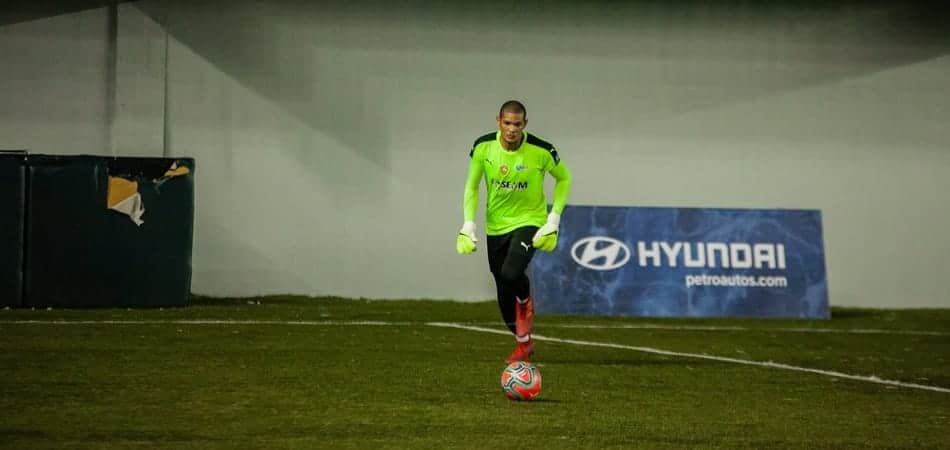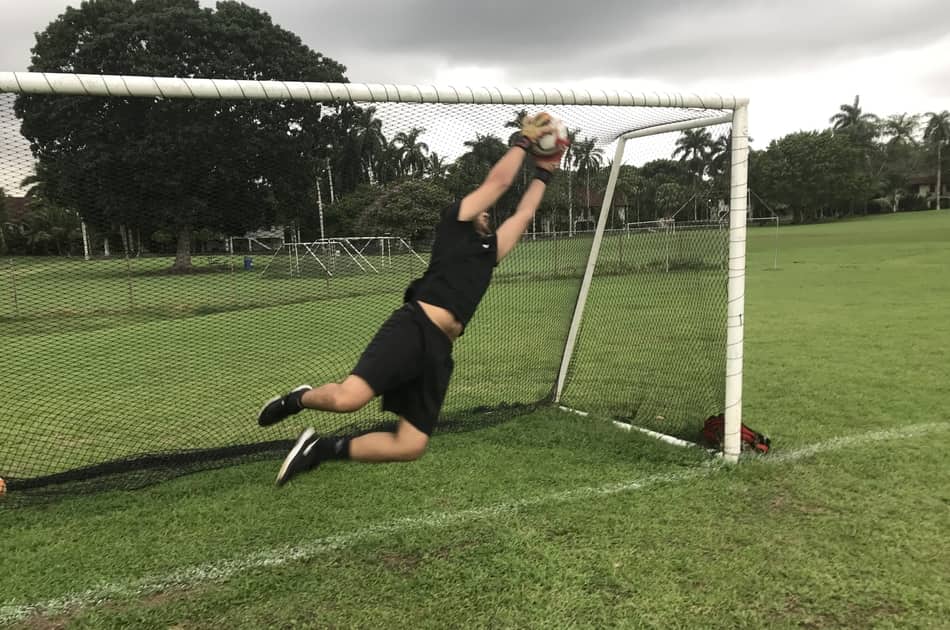
Goalkeeping gloves are by far the most essential equipment for any goalkeeper in soccer. Every professional has a few pairs of gloves sitting in their kit bags. The reason for keeping extra gloves is to have separate pairs for training purposes. Soccer is a sport that is followed by billions around the globe. Professional soccer players are treated by fans as celebrities. People copy their style, attire, looks, and kits.
So, how often a professional goalkeeper changes his gloves? There are professionals that use a new pair of gloves every match, however, there are also players who give priority to the ones having better grip, flexibility, and ball control. Such players usually wear gloves for 5 to 7 matches.
Replacing gloves is entirely dependent on the professional who is using them. Cause there is evidence that professional soccer goalkeepers do not use their match gloves for training and they take extra care of their game gloves. It will be different for every case, and in this article, I’ll help find out what’s best for you.
How Often You Need to Replace the Gloves?
We cannot generalize a particular period for use of gloves. Player preferences for wearing gloves multiple times can be contrasting but the life of a goalkeeping glove is usually 12-14 matches which are constant for every pair. Changing gloves are also dependent upon certain other variables.
If you are reading this, you are probably not a professional goalkeeper and you don’t have the means to spend so much in gloves, so how can anyone buy gloves that are not only good but are durable as well?
The answer to this lies in the discussion that if you are a beginner at soccer goalkeeping and want to buy gloves that are of fair quality and are long-lasting, you need to consider buying training gloves for starters and then move on to the higher quality material gloves. Training gloves might not be the best gripping or fitting gloves but they are definitely built for hours and hours of practice.
What gloves to choose according to your needs and budget?

Gloves for a goalie are of prime importance in soccer. The most essential gear involved for a goalkeeper in sports is his gloves. On the basis of quality and pricing gloves are of various types.
If you are a professional with no restrictions of spending top dollar for a pair of gloves it is important for you to go for highly protective, good gripping gloves that might not be durable but are of ace quality and serve the purpose of necessary protection and care.
To have the know-how of such gloves visit my Recommended Goalkeeper Gloves Page where I give you my top picks for this important piece of gear for goalkeepers.
This link has some of the best quality goalie gloves that provide you with all the top features of protection, quality, and grip. They might wear out quickly but to use them for the long-term you can prolong their life by only using them for official matches and taking extra care.
If you are someone that is close to a beginner and has no earning through the sport of soccer you might consider buying gloves that are of fair enough quality and durable. Having limited resources, it is imperative for you to buy something that can aid you in training hard with ultimate endurance and can withstand hours and hours of practice.
Some gloves I recommend that are affordable and durable for beginner level soccer players can be seen here Low on Budget Gloves. The gloves listed here are of reasonable price and quality, serve the purpose of training quite properly.
Tips for taking Care of Gloves
- When buying new gloves, be sure to wash them and let them dry before using them for the first time. This is intended to help improve their grip. Such practice is good for latex-based gloves.
- Be sure to place the gloves in a place of cool and insulated environment in the off-season.
- Do not put your gloves and palms together. They can cling together and tear-off.
- Make sure to use expensive gloves only for proper matches in order to increase the life of the gloves.
- Don’t use gloves while they are still wet this might damage the shape and fabric of the glove.
- Make sure not to throw them in areas where they might end up in other player’s feet. It will be detrimental to their cause.
Materials used for making gloves
This is a major factor in deciding the life of a glove for a goalkeeper as many goalkeepers change gloves in every match but the ones that use gloves which are made of latex material often wear them for 4 to 5 matches because the grip becomes better after a few washes.
Gripping ability
Gloves that have a better feeling of grip are mostly used by professionals for multiple matches. And they only take the gloves out for match purposes.
Professionals have a separate pair of gloves for training so that the gloves they are comfortable with will last longer, and can use them mostly when it is most important: matches.
Protection capability
As technology advancements have been made throughout, changes in sportswear have also transpired with new features being added for extra protection and better feeling. Gloves are mostly selected nowadays on the basis of how much finger saving ability they possess and how much grip they provide.
Flexibility
One more added feature that professional goalkeepers look for in a glove is flexibility and movement for achieving ball control. By assessing flexibility goalkeepers decide on how far to go with a particular pair.
Goalkeeping Gloves Features
While considering buying a professional pair of gloves there are multiple things to look for before opting to buy something online. Such considerations involve the following:
Backhand
The backhand is mostly padded with protection which is necessary for keepers while punching the ball forcefully. Cheaper gloves only have a foam padding which is not enough, whereas, expensive ones have latex for protection.
Fingers
The Finger area is an essential part of a glove as it is necessary for holding, controlling, or tipping the ball over the goalkeeping bar. Low-quality gloves do not have any support for the fingers inside resulting in strains when hard kicked balls are attempted to be stopped. Expensive ones have supports inside the finger area of the gloves to protect any fracture and reducing the chances of strain. Professionals prefer protection that is safer as well as flexible to work with. In such cases, bendable plastic protection is of best usage.
Palm
The Palm area of gloves is of 2 textures: smooth and dimpled. Expensive gloves are the ones having smooth textured palms as it has a sticking agent that helps a goalkeeper to grip and grab a ball hit forcefully. But the sticking agent gets weaker with every match that is such gloves are only used in proper matches.
Dimple palmed gloves are mostly used for training purposes as they have less clinging ability but more durability then expensive ones. Such features render them useful for training for the long-term.
Closure
It is part of the goalkeeping glove that connects to your wrist and keeps the glove in place. It comes in 3 types: Bandage, v-notch, and hook & loop. Bandage closure gloves usually fix the wrists by wrapping around like a regular bandage. Hook and loop closure gloves are made using elastic and are adaptable. V-notch closure gloves have a breathable mesh-like design keeping hands dry and increasing airflow.
Types of Goalkeeping Gloves

Following are some general types of goalkeeping gloves:
Match Gloves
These are the gloves used by goalies in proper league matches. Such gloves are expensive because of their protective material (latex paddings) and internal spines along with flexible plastic protections. They also have a quality grip with ball control ability. Gloves of this quality are only used for proper matches as they are sensitive.
Training Gloves
Such gloves are mostly used by lesser experienced players and are used as training gloves by professional goalies. They lack the excellent protective ability and gripping but are more durable.
Weather Gloves
These gloves are worn by players for protection against extreme weather conditions like hailing, raining etc. Their palm area is made up of top-quality gripping material. Gripping of such materials enhances in rainy conditions making them ideal to wear in rain.
Types on basis of Cuts/Fits
The manner in which the palm of a glove is produced is known as cut or fit. Some types are as follows:
Flat
This design of the palm is brought about by only a single flat foam padding. The fitting of flat palmed glove is a little loose and moveable for the hand.
Rolled
For professionals that like a tighter grip of the glove on the hand generally prefer such rolled sided gloves that are stitched at the back of the fingers.
Negative
Such gloves are mostly designed for professionals having quite thin hands. The fingers are sewn internally very close together providing a very tight grip of the glove.
Hybrid
As the name suggests this glove is made by adding features of the aforementioned types.

